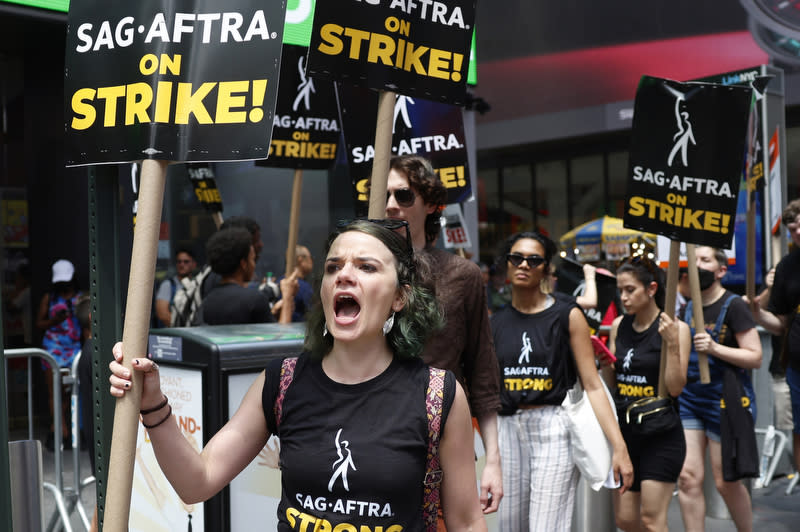2023 marked most active labor dispute year in more than two decades: Pew analysis

2023 was the most active year for major labor disputes in more than two decades, according to a new analysis from the Pew Research Center published Thursday.
The analysis looked at data on major work stoppages in 2023 from the federal Bureau of Labor Statistics (BLS), which categorizes stoppages as “major” if they involve at least 1,000 workers and if they last for at least one full shift during a standard workweek. The analysis examined data through Nov. 30.
There were 30 major work stoppages that started in 2023, according to the analysis, which said that number was the highest since 2000. A total of 464,410 workers were involved in the stoppages, which the analysis said was the second-most since 1986.
The BLS began recording monthly data on major work stoppages in 1993, and it uses the metric of “days idle” to describe the impact of the work stoppages. By that measure, the 2023 actors’ strike against major Hollywood studios was the second largest in the U.S. in at least three decades.
The Screen Actors Guild-American Federation of Television and Radio Artists (SAG-AFTRA) strike lasted nearly four months and, according to BLS data, the strike idled 160,000 workers for 82 workdays — resulting in more than 13.1 million “days idle.”
The 2000 strike about actors’ pay for appearing in commercials was the only labor dispute to have a larger impact, according to the Pew analysis. That strike was led by SAG and by AFTRA, which only merged in 2012, and lasted nearly six months, resulting in 17.3 million days idle.
2023 was marked by several other notable strikes.
The Writers Guild, like SAG-AFTRA, went on strike against the same production companies, idling 11,500 workers for 102 workdays — a total of 1,173,000 days idle.
The United Auto Workers strike against Ford, General Motors, Mack Trucks and Stellantis idled 53,700 workers for 43 workdays — resulting in 925,900 days idle.
A coalition of various unions went on strike against Kaiser Permanente, idling 75,600 workers for three workdays — resulting in 226,800 days idle.
The Pew Research Center analysis notes that while 2023 stood out in recent history as an active year for labor disputes, the number of work stoppages has fallen dramatically since 1947, when BLS has comparable data.
The analysis says that from 1947 through the 1970s, “the U.S. routinely experienced hundreds of stoppages a year. Hundreds of thousands or even millions of workers were involved.” The length of time of the strikes differed significantly, however.
In 1952, for example, the analysis states there were 470 major work stoppages involving more than 2.7 million workers — creating 48.8 million days idle. In comparison, 2023 had 30 major stoppages involving 464,410 workers — creating 16.7 million days idle.
The Pew Research Center analysis offered an explanation for the shift.
“Whether measured by raw numbers, workers involved or days idle, major work stoppages generally became less common after about 1980 — though not without occasional upsurges,” the analysis read.
“The U.S. economy grew away from its heavily unionized manufacturing sectors, and the federal government under then-President Ronald Reagan turned hostile to organized labor. In 2009, for instance, only five major work stoppages took place, involving a total of just 12,500 workers.”
For the latest news, weather, sports, and streaming video, head to The Hill.


